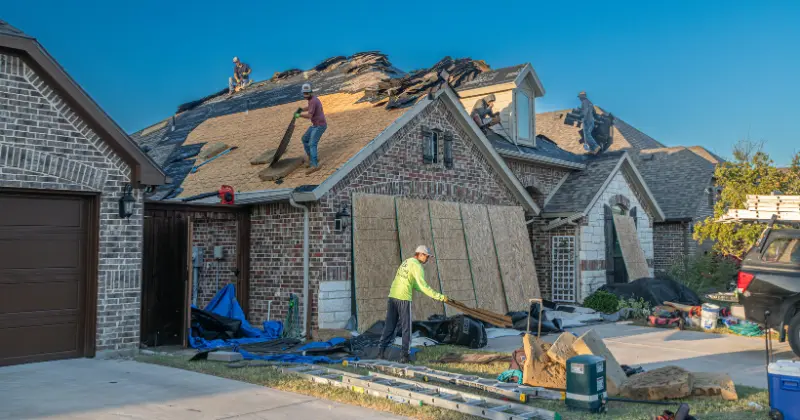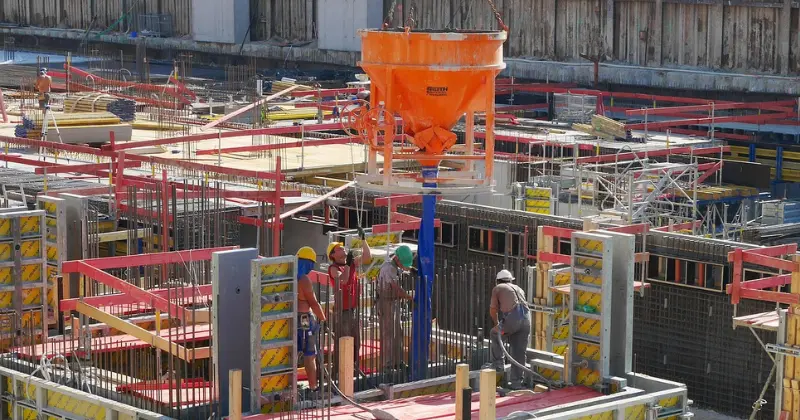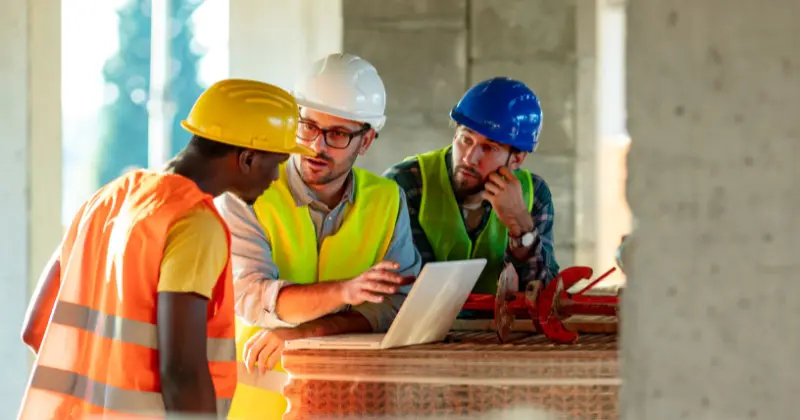11 mins read
Discover 15 Common Construction Risks and How to Prevent Them

A wide variety of architectural options, environmental conditions, and building techniques make careers in the construction industry exciting and rewarding. Still, changing circumstances and new practices also introduce risk factors that all projects must contend with. The first step towards identifying and mitigating these issues is understanding the common construction risks and the reasons why they occur.
In this blog post, we review the scope, definition, and causes of these hazards by providing a comprehensive list of risk factors that all project teams should be aware of.
What are Construction Risks?
Construction risks include any factors, events, or circumstances with the potential to have a negative impact on a project outcome. This includes safety, quality, and environmental issues, as well as legal and financial concerns that are not always visible on the job site.
Construction risk management is an ongoing process that involves identifying all risk factors, determining how likely they are to occur, and then prioritizing them for corrective actions based on the combination of likelihood and severity and the possible consequences. The goal of risk management is to address issues proactively so that minor problems do not escalate into major concerns and surprises are minimized.
Complex construction projects often have a long list of risk factors to consider and an equally extensive list of contractors, subcontractors, designers, and other stakeholders who must play a part in identifying and resolving the issues. This makes construction software tools for risk management and collaboration an important element of the overall process.
15 Common Types of Risks in Construction Projects

Risk factors can be broken into broad categories such as environmental, safety, productivity, and financial. Still, these basic types of construction risks only cover a fraction of the problems that might be encountered. Our comprehensive list includes some of the more probable, costly, and avoidable perils.
1. Delays
Despite best efforts to manage schedules, budgets, and resources effectively, over 70% of construction projects still experience delays. This problem is common because delays can be caused by many different issues, including change orders, accidents, material shortages, permit issues, or inadequate planning or communication during the project. Avoiding preventable delays while adding contingencies for unforeseen events are key responsibilities for project managers and contractors.
2. Design inefficiencies
Design inefficiencies are flaws, errors, and shortcomings during the planning and development stages of a project that lead to waste, rework, and construction productivity issues. These inefficiencies can also be caused by poor material choices, overly complex designs, and other issues that can impact schedules and budgets. Advanced software tools like building information modeling (BIM) help to reduce inefficiencies by streamlining collaboration and testing processes during the design phase.
3. Contract disputes
Disputes among contractors, clients, and subcontractors are another common risk in construction projects that can derail progress while damaging relationships between stakeholders. These disputes often arise based on disagreements over the scope of work (SOW), quality issues, delays in payment processing, or scheduling conflicts. Well-written, detailed contracts and effective communication channels help to minimize the likelihood of contract disputes.
4. Poor planning
This broad category encompasses many of the errors and oversights made in the early stages of a project that lead to larger problems if left uncorrected. Common missteps during the preconstruction planning process that increase risk include:
- Overly optimistic timelines lacking buffers and construction contingencies
- Inadequate participation and buy-in from key stakeholders
- Underestimated materials and resources
- Lack of clearly defined goals and milestones
The absence of risk management activities before and during construction is another example of poor planning with far-reaching consequences.
5. Documentation discrepancies
A large project might involve thousands of construction documents, including drawings, specifications, contracts, permits, and construction submittals, just to name a few. Errors or discrepancies with any one of these documents present a serious risk with potential legal, quality, and financial implications. Cloud-based construction document management software helps mitigate these risks by simplifying revision control and ensuring all parties have access to the most current information.
6. Labor shortages
An aging workforce and growing competition from other industries are among the factors behind the global construction labor shortage. Over 30% of employers have trouble finding skilled workers. This creates a serious risk when having the right resources to complete project tasks on time is not guaranteed. Competitive wages, retention programs, flexible scheduling, and increased automation are some of the strategies being adopted to address these risks in construction projects.
7. Poor change management
Project changes always introduce additional risk, especially when they directly impact the scope of work, or push out completion dates. The construction change management process itself also increases risk when critical changes are acted upon before they are fully understood by contractors or approved by clients. An early emphasis on planning decreases the likelihood of ongoing changes, while streamlined change management procedures and software help to resolve the communication gaps.
8. Security hazards
Security risks from theft, vandalism, violence and other physical threats can escalate as projects and construction sites grow larger and more complex. With more companies deploying construction software, ERP systems, BIM, and other digital tools, cybercrimes are another security hazard that must be addressed. Thankfully, surveillance technology has improved for both physical and computer security. Deploying these tools correctly is an important key to effective risk management.
9. Supply chain issues
The availability of materials is a fundamental project assumption, so supply chain interruptions can pose substantial risks. Delayed material shipments, global shortages, and unexpected price increases are supply chain issues with potentially serious consequences. While these problems can often be managed through lean construction methods, supplier partnerships, or diversified sources, the impact of unexpected business closures, natural disasters, and other supply chain shocks can be more difficult to plan for.
10. Equipment failures
Nearly all construction projects rely on equipment, ranging from cranes and bulldozers to power saws and belt sanders. Important work can come to an indefinite halt when equipment breaks down. Equipment failures impact productivity and budget adherence, and they also create safety hazards when powerful tools malfunction during critical tasks. Strategies to manage the risk of equipment failure include:
- Preventive maintenance programs to avoid unexpected breakdowns
- Continuous replacement of outdated or damaged equipment
- Daily equipment reviews and inspection practices
- Operator training on safe equipment handling and storage
11. Budget overruns
Since most projects experience delays, it’s not surprising to see budget overruns also make an appearance on the list of risks in construction projects. The causes behind the overruns experienced by 90% of construction projects include scope changes, material cost increases, rework, and many other factors. Overruns are a common problem, but the legal, financial, and reputational consequences can be reduced through rigorous progress tracking, labor and material cost monitoring, and accurate construction cost estimations early on.
12. Non-compliance with regulations
All project teams understand that compliance with local, state, and national laws and regulations is mandatory, and non-compliance (even temporarily) presents a serious risk, but the consequences should still be discussed and emphasized to ensure these activities are given the proper attention. Non-compliance can lead to fines, penalties, and other legal consequences, so a solid understanding of all requirements and a commitment to ongoing compliance should be high priorities.
13. Unexpected weather conditions
Weather events, especially extreme conditions like blizzards, hurricanes, and tornadoes, are sometimes thought of as unpredictable and unmanageable risks, but most weather conditions can be mitigated with the right precautions and contingencies in place. Weather monitoring and early warning systems help project managers protect resources and adjust schedules accordingly, while adequate insurance policies and weather-related contract clauses provide a safety net to protect builders and their clients from even the most serious weather events.
14. Unforeseen site conditions
Most construction sites remain relatively stable throughout the duration of the project, but it is still possible to encounter unexpected changes or discoveries related to the site itself that present schedule, safety, and building risks. This includes unforeseen geological conditions, such as underground rock formations or soil instability that were not discovered during surveying or site excavation. Additional site conditions that increase risk include soil contamination or underground utilities and storage tanks.
15. Poor communication between stakeholders
Last (but not least) on our list of risks in construction projects is a common issue that is difficult to define but easily preventable. Inadequate communication between contractors, subcontractors, engineers, and clients can lead to costly delays and misunderstandings. Worse yet, poor communication practices might cause obvious hazards or quality issues to go unreported, with the risks to worker safety and project success multiplying with each passing day. Construction management software is the key to improved jobsite collaboration.
Conclusion
Construction risks are unavoidable, but sound risk management practices help to prevent risk factors and hazards from overwhelming project managers and contractors. Construction software solutions provide an ideal platform to communicate, track, and analyze risks while ensuring all stakeholders contribute to risk mitigation.
RIB Software solutions are built to simplify key processes like estimating, scheduling, resource management, and procurement to improve project efficiency while minimizing risks.
Discover the many ways our state-of-the-art solutions can transform your business and get your free demo for RIB’s toolkit today!
Most Recent
11 mins read
10 mins read
10 mins read
29 mins read
Blog Categories

Ebook











